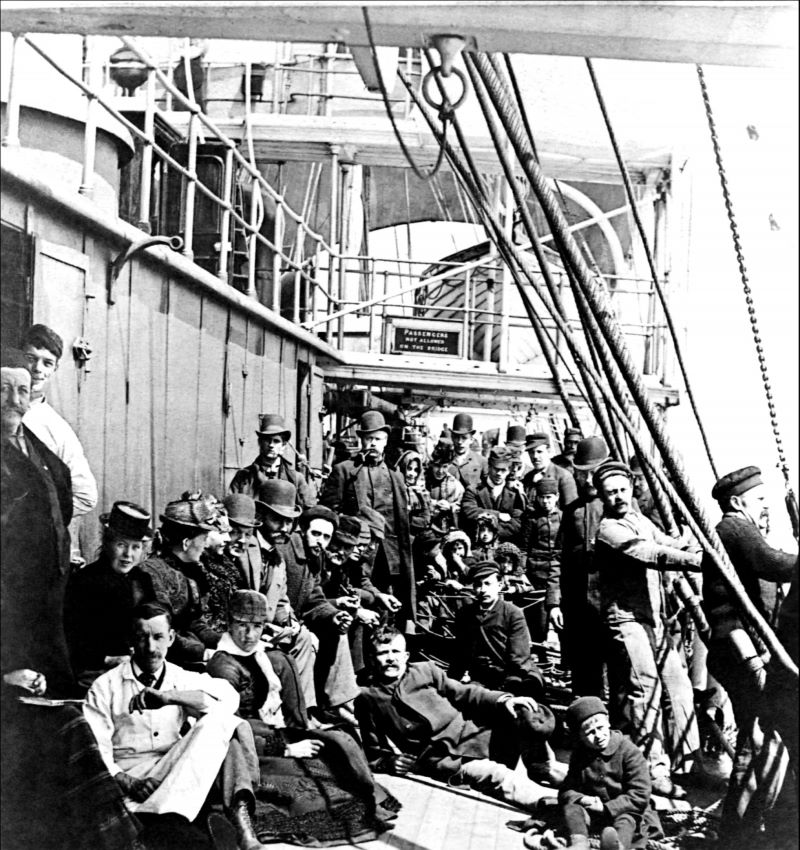According the latest report, the Jewish-American population in the U.S. is approximately 6 million, accounting for 2% of the total population. Although a “minority group,” Jewish Americans have had a profound influence across various aspects of American society, especially in finance and economics. Multiple Federal Reserve Chairs and U.S. Treasury Secretaries have been of Jewish descent. Known for their high levels of education and income, they have exerted a subtle yet significant influence on American politics.
Three Waves of Immigration Brought European Jews to North America
The story of Jewish Americans began in 1654 when 23 Jews arrived in New Amsterdam (now New York), establishing the first Jewish community in North America. This marked the beginning of the first wave of Jewish immigration, which continued as more Jews migrated to North America.
This wave primarily consisted of Sephardic Jews—those of Spanish or Portuguese descent. Facing discrimination and religious persecution in their homelands, Sephardic Jews were drawn to the relatively tolerant culture of the North American colonies, which they saw as offering greater religious freedom. Additionally, North America’s rapid development and abundant economic opportunities attracted many Jews seeking a better life. By the time of America’s independence in 1776, around 2,500 Jews had settled in coastal cities such as New York, Charleston, and Philadelphia, with most engaged in trade.
From 1840 to 1880, the U.S. experienced a second wave of Jewish immigration, predominantly from Central and Eastern Europe, commonly referred to as Ashkenazi Jews. Like their Sephardic counterparts, these immigrants left their homelands due to difficult living conditions and religious strife, seeking new beginnings in America.
The political upheavals of mid-19th century Europe, including the 1848 revolutions, left many Jews homeless. Meanwhile, the U.S. was undergoing industrialization and economic growth, offering employment opportunities in emerging industries. These conditions drew Jewish immigrants like Marcus Goldman, founder of Goldman Sachs, who arrived in America in 1848.
Goldman, born in 1821 in Bavaria, Germany, to a Jewish family of modest means, immigrated to the U.S. at 27 amidst rising anti-Semitism, famine, and harsh conscription laws. Starting as a street vendor in Philadelphia, Goldman worked tirelessly, honing his language and sales skills. Eventually, he moved into garment trading, which provided him with the capital to transition into finance. In 1869, he founded Marcus Goldman & Co. (the predecessor of Goldman Sachs) in New York, initially operating out of a small basement with just two employees. Through buying and selling promissory notes, he quickly amassed significant wealth, laying the foundation for one of Wall Street’s most prominent investment banks.
The success of this wave of immigrants led to a significant increase in the Jewish population, reaching approximately 250,000 by the late 19th century. Jewish communities expanded geographically, spreading into America’s interior.
The third and largest wave of Jewish immigration occurred between 1880 and 1924, when around 2 million Jews from Eastern Europe arrived. By 1924, the Jewish population in the U.S. had grown to 3.5 million. This wave not only boosted the economy but also enriched American culture, contributing to fields such as music and cinema.
Faced with Discrimination in Education and Employment
Although America was founded as a land of cultural inclusion, racial and religious prejudice persisted.
During the Civil War, anti-Semitism surged on both sides of the conflict, with baseless accusations against Jews for profiteering and colluding with the enemy. Cartoons depicted Jews as exploitative merchants, and officials even ordered the expulsion of Jews from certain regions.

In the late 19th and early 20th centuries, as Jewish immigrants integrated into the middle class, resentment grew among native-born Americans. During economic downturns, populist movements often scapegoated Jews as corrupt financiers threatening traditional American values. The infamous Leo Frank case in 1915 exemplified the deep-seated anti-Semitism of the era, where Frank, a Jewish factory supervisor, was lynched despite a lack of evidence linking him to a murder.
Jewish Americans also faced systemic discrimination in education, employment, and housing. In the 1920s, prestigious universities like Harvard introduced quotas to limit Jewish enrollment. Meanwhile, Jewish refugees fleeing Nazi Germany in the 1930s were often denied entry into the U.S., as in the case of the SS St. Louis, whose passengers were forced to return to Europe, where many perished.
The tide began to turn during and after World War II. Jewish Americans played vital roles in the war effort, both on the battlefield and at home, earning greater recognition and acceptance in society.
The Morgenthau Family: America’s “Jewish Kennedys”
Historically excluded from land ownership due to religious restrictions, Jews gravitated toward professions such as retail and finance. With an emphasis on education and a pragmatic approach to careers, many Jewish Americans thrived in banking, founding institutions like Goldman Sachs and Salomon Brothers that became pillars of the U.S. economy.
One notable example is the Morgenthau family, often referred to as America’s “Jewish Kennedys.” Lazarus Morgenthau, a German cigar maker, immigrated to the U.S. in 1866 after his business failed. His son, Henry Morgenthau, shifted the family’s fortunes, rising to prominence as a lawyer, real estate investor, and later a diplomat, serving as U.S. ambassador to the Ottoman Empire during World War I.
Henry’s son, Henry Morgenthau Jr., further elevated the family’s stature. A close ally of President Franklin D. Roosevelt, he served as Treasury Secretary for over a decade, becoming a key figure in the New Deal and World War II policies.
Similarly, Goldman Sachs left a lasting imprint on U.S. politics. Many of its executives transitioned into public service, including Robert Rubin and Henry Paulson, who served as Treasury Secretaries under Presidents Clinton and Bush, respectively. During the 2008 financial crisis, the prevalence of Goldman alumni in government led to the term “Government Sachs.”













Leave a comment